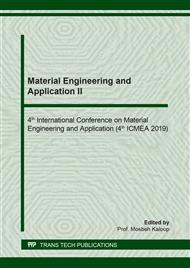p.171
p.177
p.182
p.188
p.193
p.198
p.203
p.209
p.214
Cemented Mortar Matrices Densified with Organic Additions
Abstract:
Nowadays, one of the biggest problems is the environmental contamination, which is attributed to a great variety of factors, among which is the construction, because one of the main synthetic materials most used is concrete, artificial material consisting of portland cement, fine aggregates, coarse aggregates and water, in the production and processing of portland cement a large amount of carbon dioxide (CO2) is generated, by 2018 approximately 8% of CO2 emissions from the world is attributed to the cement industry. As a solution to this problem, substitutions and additions to portland cement are proposed, which will generate a reduction in consumption and processing by having a more durable and better quality material in terms of physical and mechanical characteristics. Additions of 2% are made with respect to the weight of the cement of organic additions, which do not affect the behavior of the mortar. Cubic specimens were developed for tests of pulse velocity, compressive stress and accelerated attack of sodium sulfate to determine the durability of the material, where favorable results were obtained with organic addition of corn starch.
Info:
Periodical:
Pages:
193-197
Citation:
Online since:
May 2020
Keywords:
Price:
Сopyright:
© 2020 Trans Tech Publications Ltd. All Rights Reserved
Share:
Citation:


